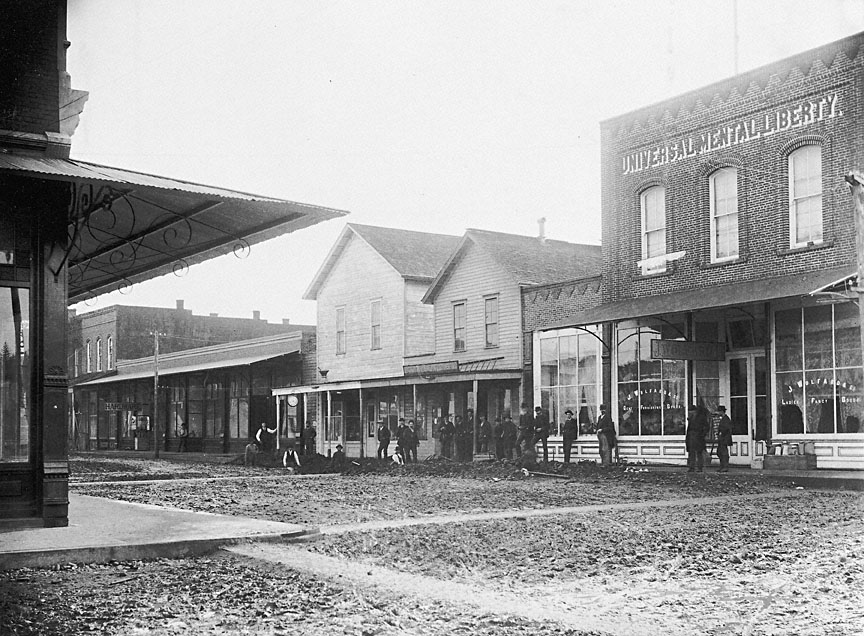This photograph of Silverton, Oregon’s Main Street (at Water Street) was taken between 1896 and 1898. At the time, the short-lived Liberal University was conducting classes from Liberal Hall, visible in the far right of the image above John Wolfard’s store. Liberal Hall was managed by the Silverton Liberal Union (begun in 1887), whose motto, “Universal Mental Liberty,” is visible over the second floor windows.
Efforts to establish Liberal University began in the fall of 1895 when members of the Oregon State Secular Union (OSSU) agreed to begin raising funds for a secular university. Proponents of the school, particularly John and Minnie Hosmer, Pearl Geer, and Nettie Olds, originally envisioned the creation of a non-religious university in Portland, but in-fighting among Portland’s secular society led them to relocate the school to Silverton, Oregon. According to scholar Patricia Brandt, “the basic problem with organizational efforts among freethinkers was the extreme diversity of views….Almost the only point of doctrinal agreement was the rejection of Christianity, and even in this area serious disagreements existed.”
Liberal University opened in January 1897 with classes being taught by Hosmer and Geer, in Silverton’s Liberal Hall. During the first year, enrollment reached a high of thirty-seven students, but the school administrators weren’t able to live up to the fundraising promises they had made to the Silverton Liberal Union. Even worse, personality conflicts and ideological struggles between Hosmer and Geer (anti-freelove moralists) and Olds (a leader of the freelove movement within the OSSU) erupted into a public fight that reached local, regional, and national audiences through editorials in liberal publications such as the Torch of Reason, Free Thought Magazine, and Truth-Seeker.
Funds were slowly raised and dedicated to the construction of a new university building on North Pine Street. Unfortunately, by the time the building was completed in 1902, Liberal University had closed its doors and the OSSU had dissolved. Thaddeus Burr Wakeman, who had replaced Hosmer as the university president in January 1901, credited the “factionists” among Oregon’s secular crowd for the local movement’s demise, accusing them of “tearing it to pieces for their own interest or animosities.”
In 1920, the university’s building was purchased by the Archdiocese of Oregon City for use as a Catholic day school.
Further Reading:
Brandt, Patricia. “Organized Free Thought in Oregon: The Oregon State Secular Union.” Oregon Historical Quarterly 87, 1986: 167–204.
Written by Joshua Binus, © Oregon Historical Society, 2006.
